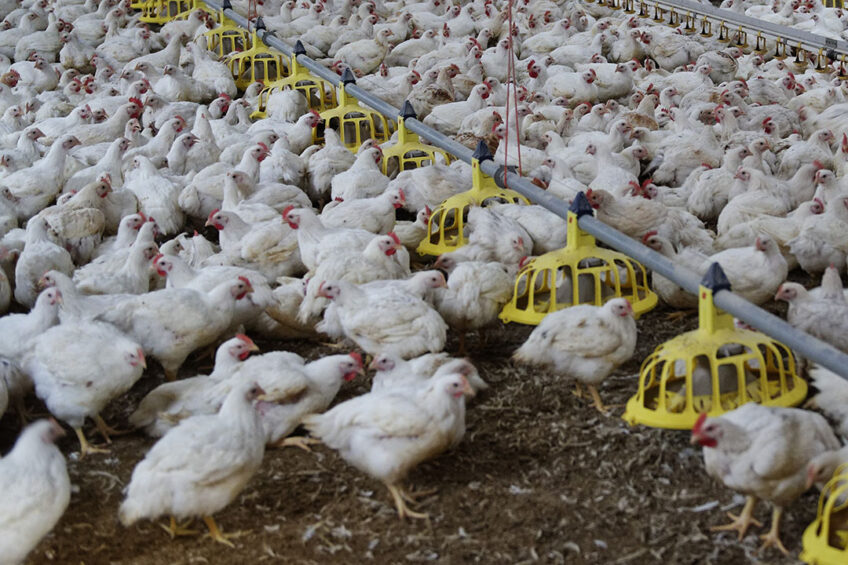Identification of early indications of Necrotic Enteritis in broilers

Rising levels of Necrotic Enteritis, caused by Clostridium perfringens, is causing increasing health concerns in broiler flocks.
With many companies in countries such as the US adopting a ‘no antibiotic ever’ strategy, identifying biological indicators, such as a specific class of volatile organic compounds (VOC) during Necrotic Enteritis development may help initiate prompt disease control measures.
Researchers from North Caroline State University carried out a study that aimed to identify Necrotic Enteritis-specific VOC, including reduced sulphur compounds (RSC) in the faeces/manure as well as environmental (i.e., air) samples collected during the 4-day period of Necrotic Enteritis development using an experimental infection model in broiler chickens.
The project consisted of 3 objectives:
- To reproduce Necrotic Enteritis in broiler chickens using an experimental C. perfringens challenge model.
- To evaluate changes in the composition of VOC/RSC during early and late stages of Necrotic Enteritis disease progression in birds using gas chromatography-mass spectrometry (GC-MS) and identify VOC/RSC patterns associated with Necrotic Enteritis.
- Validate GC-MS method development findings with portable or handheld air-analysis devices.
To reproduce Necrotic Enteritis experimentally in broilers, researchers sought to use a dysbiosis-based Necrotic Enteritis mould that did not include the use of coccidia infection for Necrotic Enteritis predisposition. A total of 7 field strains of C. perfringens were used to infect birds to evaluate their relative disease-producing abilities. Results showed that 2 of the strains were found to be highly pathogenic to broilers and the gross and histopathology lesions were characteristic of clinical Necrotic Enteritis.
Trials
A total of 4 animal trials were conducted to identify Necrotic Enteritis-specific VOC during disease development, and the manure and air samples were collected and analysed by GC-MS. The data showed that certain amines emitted from the manure correlated with the incidence of Necrotic Enteritis. The research team also investigated the effect of litter acidification on Necrotic Enteritis development in comparison to non-acidified litter control group and thereby, any effect of treated litter on VOC emission.
While there was no significant difference in Necrotic Enteritis lesions between the 2 treatment groups, manure samples collected from Necrotic Enteritis-impacted birds exhibited higher concentrations of 2 amines when compared to those collected from uninfected control birds.
The findings show that it is possible to reproduce Necrotic Enteritis in broilers and that 2 specific amine VOCs appear to be positively correlated with the incidence of Necrotic Enteritis in birds. Further work is needed to validate the findings in a commercial setting. Upon validation, calibrating a low-cost, portable GC may provide an avenue for screening for the disease in the field.
*The research was funded by the US Poultry and Egg Association and the US Poultry Foundation.
Join 31,000+ subscribers
Subscribe to our newsletter to stay updated about all the need-to-know content in the poultry sector, three times a week. Beheer
Beheer











 WP Admin
WP Admin  Bewerk bericht
Bewerk bericht